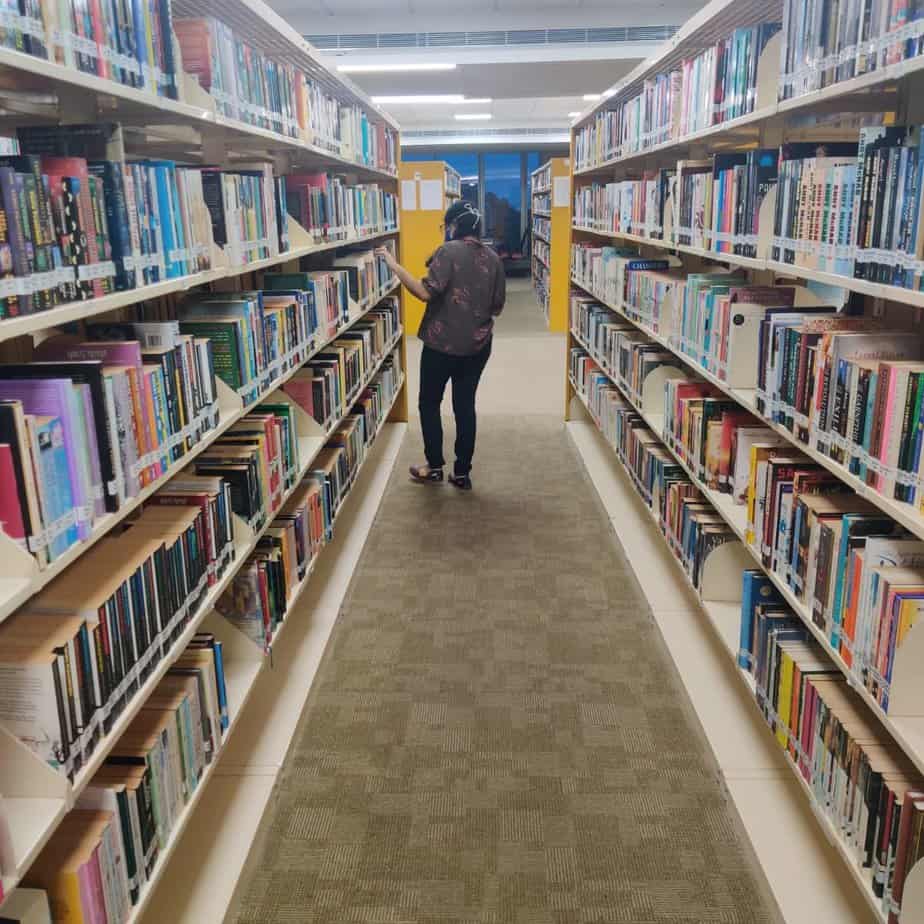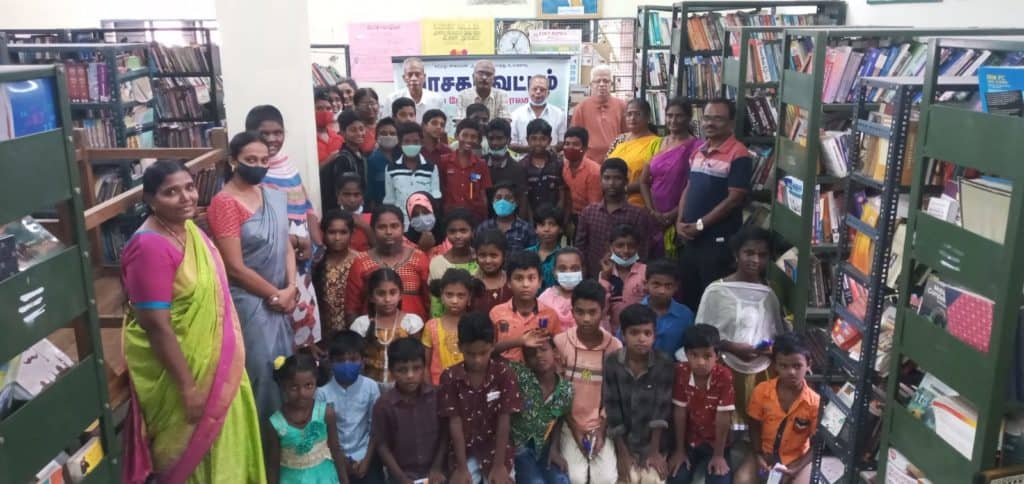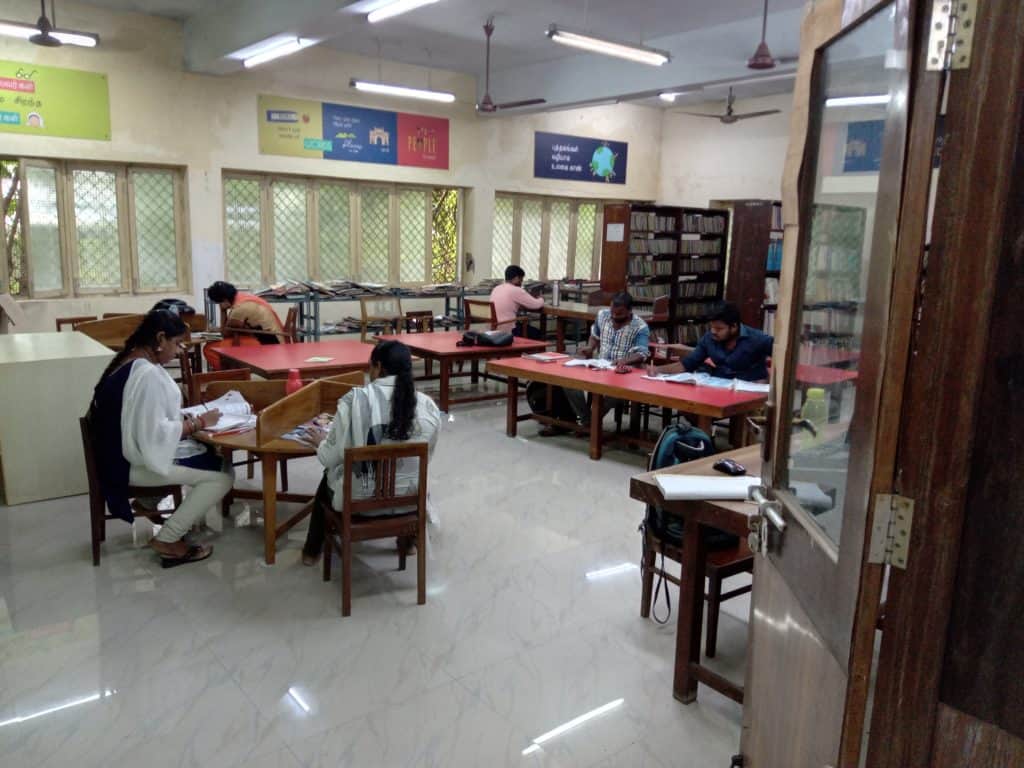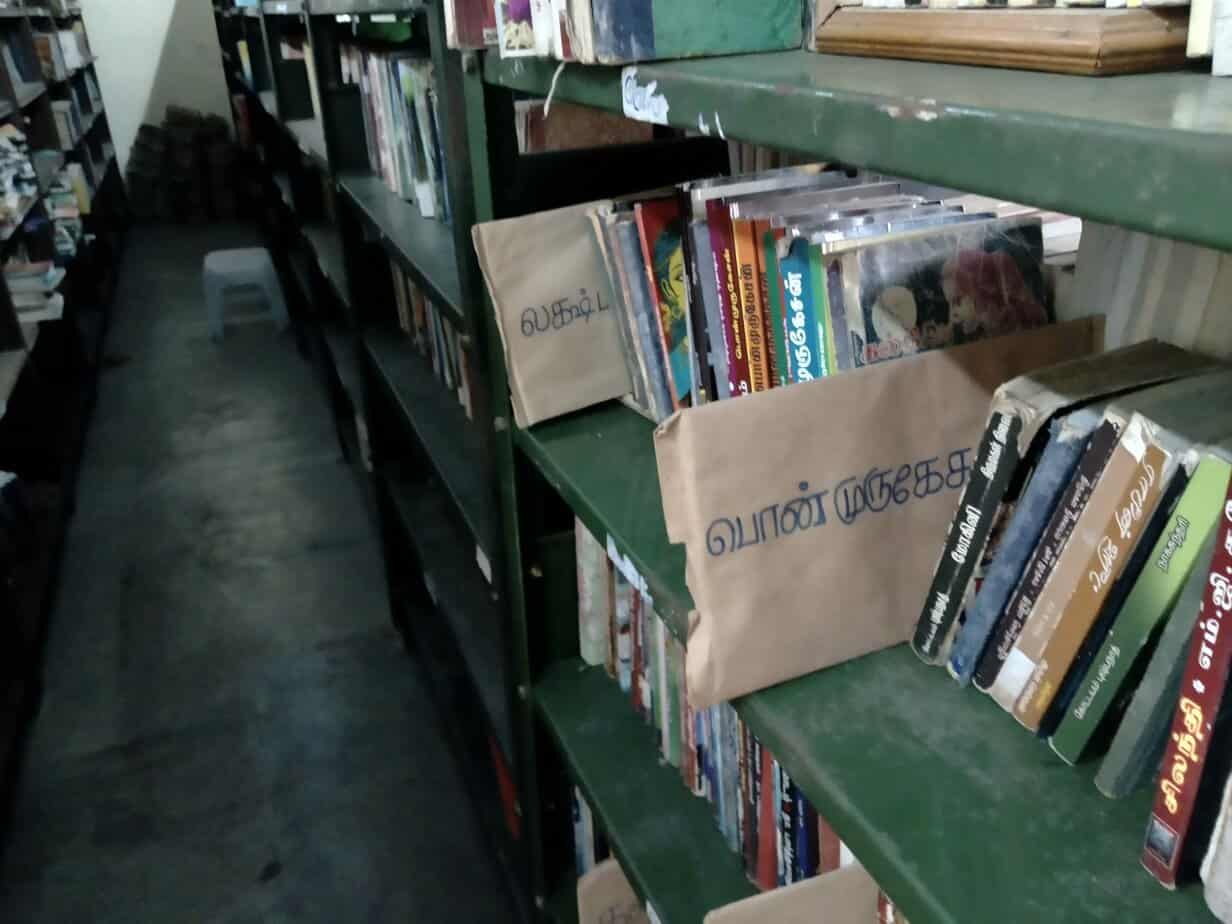COVID-19 has changed the landscape of many public services and establishments over the past few years. Chennai’s many public libraries were also among those institutions that have been affected by these changes. However, with the return of readers, there are some promising signs.
Even as many libraries continue to suffer infrastructural neglect, determined staff and loyal patrons have kept the city’s reading culture afloat even in the face of new challenges.

Public libraries after COVID-19 hit
In March 2020, when the first lockdown was announced most of Chennai’s public libraries were closed, some for two months, some for four or six. Once lockdown restrictions were lifted, public libraries had to reach out to patrons to reestablish their connection.
According to the librarian at the Gandhi Nagar circle library, while they didn’t immediately receive their usual number of readers, after a few phone calls to members, people gradually started to return. The situation was similar for other libraries such as the Thiruvanmiyur public library and the Indira Nagar library. Connemara Library in Egmore didn’t need to make any calls when they reopened.
The National Depository was closed for about six months and opened in September for staff, who started cleaning up the dust and rearranging the books to gear up for its official opening to the public in November. The library opened to scanty numbers but picked up close to the normal number of visitors six months later.
In order to allay fears over the spread of the virus, regular social distancing methods were introduced once the libraries were reopened.
“The government provided us with a bottle of hand sanitiser at the entrance. We started allowing people to come in slowly but in smaller numbers. In pre-COVID times, our intake per day was around 30 people, but now we reduced this to 10 people per day. We also would sanitise all returned books, allow persons who had come to return or borrow books to enter the room only one at a time to complete the exchange,” said Mariyammal, the librarian at Velachery library.
Read more: How an inclusive online library is helping children stave off pandemic blues
Who are the regular patrons of Chennai’s public libraries?
There seems to be a sustained culture of visiting libraries in Chennai, that has sustained itself despite numerous roadblocks posed by the pandemic.
From conversations with readers and librarians, the reasons could be the desire for collective reading spaces, the existing presence of libraries in the routines of people from older generations, and the growing anxieties of parents around their children’s intellectual growth.
Many of the librarians at their respective libraries mentioned how their key demographic has always been elderly people above the age of 60. Children and students preparing for competitive exams are also key groups that frequent the libraries.
The pandemic raised some fears for these visitors owing to their vulnerability to the virus.
According to S. Chitra, the librarian at Gandhi Nagar circle library, the collective fear around public areas played a part in the slow return of some patrons but the readers have made their way back to the libraries in the months since.
“Since our regulars are of the same age groups which are most vulnerable to COVID-19, we were rather scared about opening up our library, and we could tell that our members were also hesitant to come in. They started coming in, however, as I think the library was part of their daily routine, many elderly people that I have spoken to feel restless and controlled at home, and so they were ready to come back to a place they frequented before”, she said.
According to those at Thiruvanmiyur public library, reading seems to be an addiction for those who frequent the library, and so it wasn’t too difficult to draw in people once fears around the pandemic eased.
“People are extremely eager to read here. One by one they select books and return them quickly, only to recommend more books that the library should purchase. Books are something like an addiction to them. It is usually elderly people and a few small children who are our most frequent visitors, ” said one staff at the library.
Readers bat for public libraries
On speaking to a few visitors, their reasons for coming to the library were found to be manifold.
They mentioned that the act of reading among other readers and having the space to sit down and read somewhere outside of home were factors which kept them coming to their local libraries. A few attribute the calming nature of reading halls to be something they look forward to when visiting the library, as it helps them focus.
Many of Chennai’s public libraries have two or three collective reading spaces, some spaces were also present for students who were preparing for competitive exams. According to the librarian at the Thiruvanmiyur library, people sometimes came to the library to also spend time somewhere with their friends for a few hours without out-of-pocket expenses.
The availability of such space for leisure is something people often seek out and speaks to the popularity of the libraries in a city with shrinking common spaces.
According to Thirupurasundari Sevvel, Honorary General Secretary of the Madras Literary Society, there has been an increase in interest among parents to send their children to libraries in the past few years. “This interest only seems to have increased post-pandemic, due to fears around over-exposure to technology, and a fear that reading will take a backseat for their kids, in the face of such a visual culture of learning and entertainment.”
Public libraries and city schools
Many of these libraries also work regularly with government schools located nearby, to set up learning or reading-related events. For example, at Gandhi Nagar’s circle library, classes on reading and understanding the arrangement of books in libraries were held for students studying at the adjacent Rani Meyyamai School.
While these events were mostly stopped during the pandemic, the library reached out to teachers and even went to the school to let the children know that it was safe to come back and make use of the library.
The district library at Velachery has a similar relationship with two sets of students – students under the Illam Thedi Kalvi Scheme and those of Saint Savio School. Recently the district library held a series of competitions for the children. There were poetry competitions and elocution competitions on topics ranging from prolific writers of the state to the significance of libraries. Thiruvanmiyur library held a similar event for children as well.

Read more: Chennai’s public libraries beckon – have you visited any?
Issues that still persist
While these are promising signs of recovery, there are still hurdles that the city’s libraries must overcome.
“While many regular, multi-purpose libraries might have survived the pandemic, it is the small lending libraries that were the worst hit, as the practice of sharing and borrowing books has declined considerably over the years”, said Thirupurasundari. “It is hard to hold events at such libraries as well, and events have proved to help with increased publicity and membership at libraries.”
The staff in these libraries are appreciative of the sense of normalcy that has returned to an extent. However, the uncertain nature of the continuing pandemic has prevented them from charting out concrete plants to improve patronage and plan events.
This experience of normalcy also doesn’t seem very uniform among all those who work at these libraries.
Many of the libraries are mostly run by the underpaid work of daily wage workers, hired as ‘temporary workers’, much like in the case of other public service work in the city. Temporary workers carry out tasks such as dusting, arranging books, cataloguing and maintaining the registry, in addition to helping out readers. They keep similar hours to the permanent staff.
All part-time libraries usually have one staff member, and they are almost always daily wage workers. In the case of full-time libraries, while each library would usually have one or two permanent librarians or staff, the rest are employed on a temporary basis.
One such temporary worker, Jaya, mentioned that while she would like to keep her job at the library she works at, being a daily wage worker has left her without a sense of stability. Lockdowns were an extremely difficult time, and there is still considerable fear that a similar situation might return. “I had to sell my jewellery to pay for basic things like food. They paid us daily wages workers with no concern during lockdowns, we got no compensatory pay. Even receiving half of our salary would have helped.”
Pay is poor for temporary workers, only increasing by Rs 10 to Rs 15 every year. With the pandemic coming in and shutting all the libraries down for a few months, there has been no increase in their salary for two years. Currently, their salary is around Rs.360 per day. When Jaya first joined four years ago her salary was Rs.330.
Many daily wage workers have been working for years hoping to get permanent status at the library, only to be disappointed each time a new year rolls around and no such promotion occurs.
While the pandemic has ebbed, Chennai’s public libraries look to draw more readers. But challenges of poor infrastructure and issues with staffing are still hurdles that they must overcome. The feeling of unrest among temporary workers does not bode well for the long-term future of the libraries that rely heavily on their labour.
More innovative events and a better catalogue are also the need of the hour to attract newer readers into the fold.
While the staff and existing patrons continue to keep libraries alive, their future hangs in the balance.


